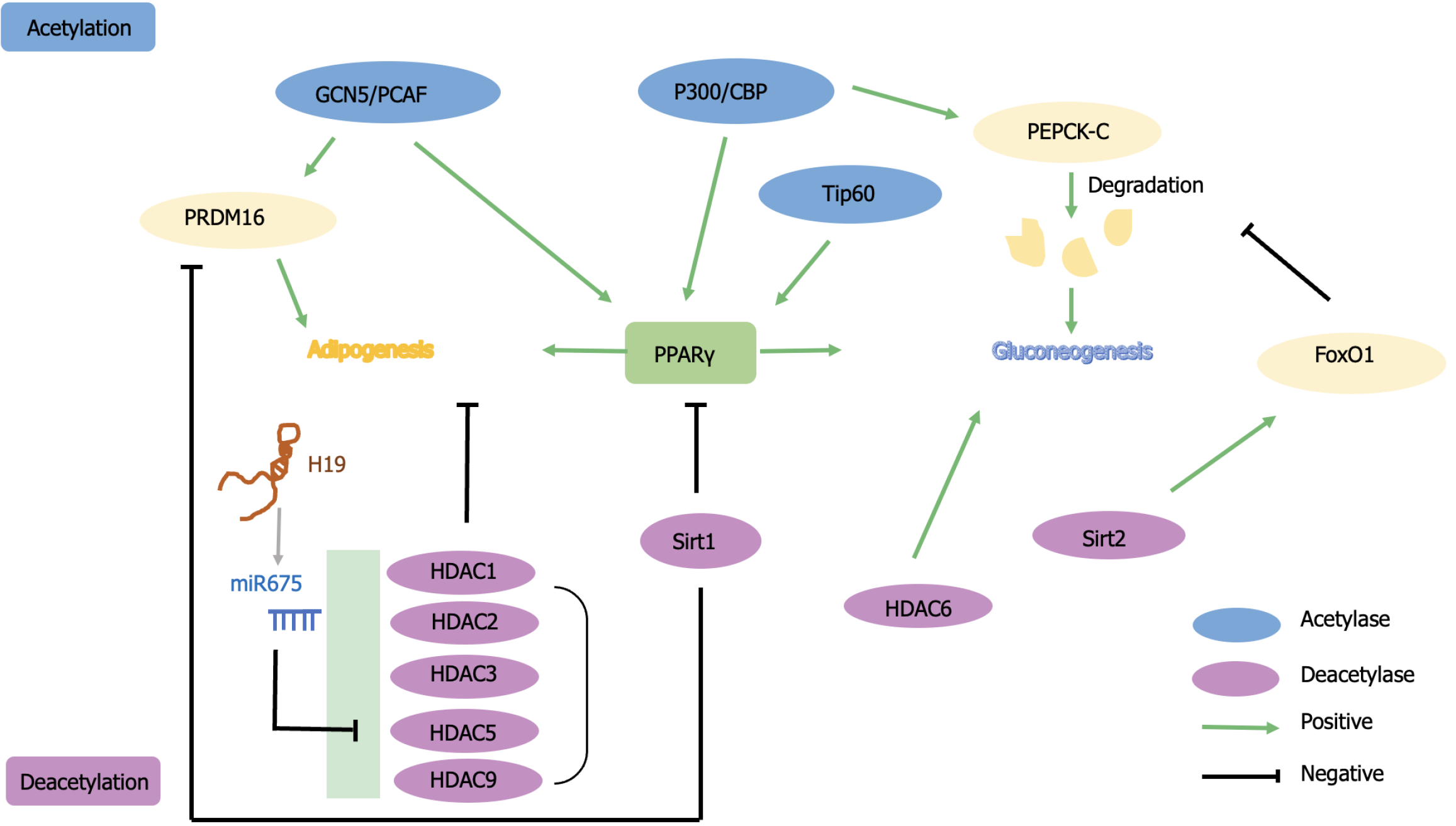Copyright
©The Author(s) 2024.
World J Stem Cells. Mar 26, 2024; 16(3): 245-256
Published online Mar 26, 2024. doi: 10.4252/wjsc.v16.i3.245
Published online Mar 26, 2024. doi: 10.4252/wjsc.v16.i3.245
Figure 1 Morphological changes in differentiating mouse thymic mesenchymal stem cells.
Schematic illustration of the adipogenic differentiation protocol and cellular morphological changes that occurred during the differentiation process 33 consecutive days after induction. Typically, mesenchymal stem cell preadipocyte commitment occurred in the first days (days 15), followed by the differentiation of preadipocytes into mature adipocytes with increasing lipid droplets. MSC: Mesenchymal stem cell.
Figure 2 Regulation of adipogenesis and gluconeogenesis by lysine deacetylases, acetyltransferases and noncoding RNAs.
Lysine deacetylases (KDACs) and acetyltransferases (KATs) are important regulators of adipocyte differentiation and gluconeogenesis. Peroxisome proliferation activator receptor gamma is acetylated by Gcn5/PCAF, p300/CBP and Tip60 but deacetylated by Sirt1. In addition, Gcn5/PCAF is also regulated Prdm16 expression to influence adipogenesis. Histone deacetylases (HDACs) 1, 2, 3, 5 and 9 redundantly regulate adipogenesis. Moreover, noncoding RNAs cooperatively interact with KDACs to regulate the adipogenic process. H19/miR-675 can inhibit HDAC5 expression. Hence, KDACs and KATs can regulate lipid metabolism. PEPCK-C is acetylated by p300 to induce its degradation and attenuate gluconeogenesis. Conversely, PEPCK-C is deacetylated and stabilized by Sirt2 through Sirt2 deacetylase. HDAC6 also plays an important role in gluconeogenesis regulation. PPARγ: Peroxisome proliferation activator receptor gamma; HDAC: Histone deacetylase; PRDM16: PR domain containing zinc finger protein 16.
- Citation: Liu SS, Fang X, Wen X, Liu JS, Alip M, Sun T, Wang YY, Chen HW. How mesenchymal stem cells transform into adipocytes: Overview of the current understanding of adipogenic differentiation. World J Stem Cells 2024; 16(3): 245-256
- URL: https://www.wjgnet.com/1948-0210/full/v16/i3/245.htm
- DOI: https://dx.doi.org/10.4252/wjsc.v16.i3.245










